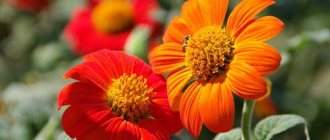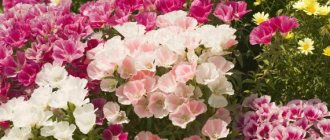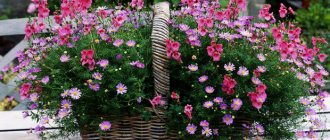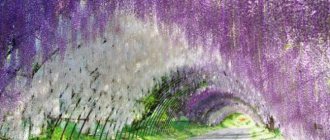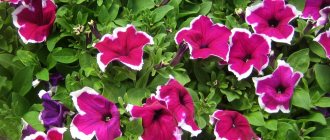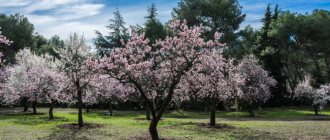- August 21, 2018
- Medicinal plants
- Anna Mallaalieva
Among the large number of herbaceous plants, hellebore heleborus (there is a photo in the article) stands out. This is due to the fact that the flowers are winter. The second name of the plant is Christmas rose. This flower was first bred in the Mediterranean. It gained fame due to its medicinal properties. Thanks to it, paralysis, gout, skin and gynecological problems, and epilepsy were previously eliminated. In addition, hellebore is now used for weight loss.
You should not pay special attention to the appearance of the plant. It is poisonous. When taking medications that contain heleborus, you must strictly follow all the doctor’s recommendations. Particular attention should be paid to the dosage. Under no circumstances should you exceed the permissible daily dose.
For gardeners, this plant is considered ideal: it is green all year round. They can decorate a shady place. Even under the snow, hellebore will look as attractive as possible.
At the moment, there are several natural and hybrid species. The plants have no stem. Flowers can reach up to five centimeters in diameter. The petals range in color from white-cream to pale red.
Where to plant hellebore? Landing location
Planting hellebores and caring for them must be carried out according to the rules. To make the plant happy for a long time, you need to find an area where there will be light shade. Due to this, the plant will constantly bloom, and the leaf blade will acquire a bright and rich shade.
Direct sunlight on hellebore causes it to wilt and deteriorate in color. The midday period is especially dangerous. It is at this time that the sun has the worst effect on the plant.
If we talk about beauty, then it is best to plant the described plant in a garden of coniferous trees. It will fit perfectly because of its evergreen color.
What should the soil be like?
What do you need to know to plant hellebore and care for it? Properly selected soil plays an important role in the life cycle of a plant. The plant prefers alkaline soil. If this is not the case, then a neutral one will do. On the turf under the trees, hellebore grows quite actively. If the soil has constant acidic reactions, then lime and ash should be added to it. The plant will grow better if it is constantly fertilized. You can use tea peels as “additives” for soil.
If you are not 100% sure that the soil is ideal for the plant being described, then you can take some soil from the nearest forest. In terms of composition and structure, this soil is ideal. It can also be used to fill the planting hole and the area around the plant.
How to water a plant?
The article presents a photo of the hellebore flower. In order for it to be just as beautiful, it is necessary to water it correctly. If the plant grows in a snowy region, then there is no need to create an artificial irrigation system. This is due to the fact that due to melt water, the earth is constantly moistened.
Hard leaves do not evaporate liquid, but in hot weather the plant still needs constant watering.
Growing and care
The main advantage of the plant is that it is easy to care for hellebore.
Requirements for soil and planting site
The basic requirements are as follows:
- they love semi-shaded positions, shady, secluded places protected from the wind;
- very resistant to low temperatures;
- prefer humus soils, moist, with good drainage and calcium content;
- perennial plants can grow in one place for more than 10 years.
You can plant hellebores under a cherry tree and tamarisk, whose branches reach the ground, protecting the flower from the wind. At the same time, a leafless bush easily transmits sunlight. It is worth planting flowers under trees and deciduous bushes, and not among coniferous trees. This position is also supported by the fact that these perennials like limestone soil, while conifers are generally acidic.
Having hellebores wandering around the garden is not beneficial. Roots sensitive to mechanical damage cannot tolerate replanting, which causes a delay in flowering. In addition to calcareous soil, the plant also tolerates slightly clayey but permeable soils. They will be grateful for drainage, humus, and compost.
Care
- Watering hellebore. Keep the soil around the plant moist.
- Feeding and fertilizers. Once a year, preferably in early spring, you can feed the hellebore with a multicomponent fertilizer. It is worth feeding them every year with compost soil or soil after growing mushrooms.
- Transplantation is not advisable. Do not disturb the soil around the winter hut; the plant has a root system that is very sensitive to all mechanical damage. For this reason, it is necessary to rethink the planting location so that replanting is not necessary.
- Winter care. In frosty, snowy winters, to protect flower buds from freezing, the plant should be covered with dry leaves or agrotextiles.
- Mature plants can be susceptible to fungal diseases that cause brown spots on the leaves, after which they turn yellow and die.
Each year it is worth buying a few hybrid hellebores with strong flower color (ranging from almost black to white, plum, pink and green). New hybrids will add pure color to the flowers of already growing bushes, although hellebores rarely inherit the characteristics of the parent plants.
Trimming
When growing hellebores, you need to remove old leaves before flowering, which will allow you to grow flowers with better access to light. After pruning, the bush looks very sad. However, this is a necessary measure to help the plant grow and develop better.
Fertilizer use
The hellebore in the photo looks luxurious. This flowering can be achieved by using fertilizers. Mulch will protect the plant's roots from being exposed. This substance begins to decompose over time, turning into fertilizer.
Other additives may not be used (this is confirmed by reviews). This is due to the fact that the air saturates the plant with mineral nitrogen, and the soil with minerals. That is why additional fertilizers should not be applied.
Planting and transplanting
Hellebore is a plant that should be planted exclusively in the autumn season. By winter the flower will have time to take root well. This will allow him to survive the winter without much difficulty. The plant grows by self-seeding. If this process is not controlled, a colony will eventually be created.
Due to self-seeding, the beauty of a flower bed or lawn is spoiled. Therefore, it is important to destroy temporary processes. In order to rejuvenate the flowerbed, you should dig up a young plant and replant it. This will get rid of old plants.
In addition, you need to make a hole no more than 30 cm. This is due to the fact that the root of the plant itself is small. Accordingly, the hole should not be too large. If you have patience, time and opportunity, then you should lay out pebbles and sand at the bottom. Thanks to this approach, good drainage will be present. It will protect the plant from diseases. This approach will be especially appropriate if the flower is flooded in the spring. The soil should be neutral or slightly alkaline. It should not be sour under any circumstances. Ideally, it should be rich in humus and turf. The latter provides looseness. Seedlings should not be pushed too deep into the holes. Watering should be done moderately. The soil should be moistened, but not too much, otherwise the plant may quickly die.
You need to monitor humidity for the first week after planting. Watering occurs every day. Approximately 1 liter of water should be used. You only need to pour it under the bush. If the weather is humid or there has been rain, then you don’t need to water that day.
Plant care
Hellebore is the easiest to care for and does not require special attention. It is enough to follow agricultural techniques when planting and provide it with the necessary conditions at the very beginning of development. In the future, Helleborus will delight you with its flowering and will not cause any disturbance.
Lighting
For growing, it is optimal to choose a shaded area where the sun's rays will rarely penetrate. It is advisable to select areas under trees or spreading bushes that will protect the plant during the midday hours. This will prolong flowering and ensure dense foliage.
The bright sun can destroy it . Hellebore tolerates unfavorable conditions well, but excess light will make the flowers and leaves small or stop development completely.
Watering
The winter plant needs watering only at the very beginning of growth, after planting for the first two months. Subsequently, the flower survives on natural precipitation. Additional overwatering can harm the plant. Excess moisture promotes the development of fungal diseases and weakens the plant.
Watering should only be done during prolonged drought with high temperatures. In other conditions, it is better not to water the flower. After artificial moistening, the soil will need to be loosened to provide air access to the root system and remove the resulting crust.
Feeding
Hellebore does not need fertilizing if the soil is properly prepared for planting. He makes do with the nutrients available on the site. However, if the soils are poor, then additional mineral fertilizers can be applied, but not more than once per season.
Organic fertilizers and compost are applied before winter. This will allow the flower to stock up on nutrients for wintering.
Pruning and preparation for winter
In the spring, after flowering has completed, it is advisable to remove the old foliage. This will speed up the appearance of new young leaves and maintain the decorative and well-groomed appearance of the plant. The procedure must be carried out with gloves, due to the risk of poisoning. Cut parts should be removed from the site and not fed to animals. All parts of the plant are poisonous, so it is imperative to work with it while observing safety precautions.
Helleborus easily tolerates temperatures down to minus 30 degrees, even in snowless winters. However, if temperatures drop lower and there is a possibility of lack of precipitation, then the flower can be covered with spruce branches.
You should not use fallen leaves for cover. It can become a carrier of infectious diseases and it is better to remove it in a timely manner. Only some hybrid varieties require shelter, but only in regions where ambient temperatures reach critical levels.
Planting in spring time
If desired, you can plant the plant in the spring. However, the hole should be slightly larger than the root itself. You need to put compost or humus at the bottom. The bush is installed in a vertical position. The root should be straightened, then it will not bend. Next, you need to sprinkle the root with soil, holding the hellebore flower with your hand. The planting level should be the same as in the seedling pot. A deviation of a couple of centimeters is allowed. After planting, the plant needs to be watered abundantly.
How to plant hellebore correctly or transplant it to a new place
Hellebore in the garden planting Agricultural technology for growing photo seedlings
The beginning of autumn is the time when you need to start planting. A couple of months before winter, it will take root well and safely survive the cold season. Hellebore is able to grow over time in one place due to its ability to self-sow. It creates entire colonies, drowning out weeds.
Annual self-seeding has a negative impact on the beauty of the flower bed. Therefore, it is so important to start thinning the helleborus in a timely manner. Very often, to rejuvenate a flower bed with a plant, young shoots are dug up and replanted, while at the same time getting rid of the old ones.
When planting, it is important to take into account the features of agricultural technology:
- The hole needs to be shallow, up to 30 cm, given that the hellebore root is small. The diameter of the hole is approximately the same.
- If you have a reserve of patience, you can put a small stone on the bottom, sprinkled with sand. Such a simple improvement will allow for good drainage, which will protect the plant from damping off in winter and putrefactive diseases when the area is flooded with melt water in the spring. However, drainage is not necessary if water does not stagnate on the site.
- The soil, as already mentioned, needs to be slightly alkaline or neutral, but not acidic. It is good when the soil is rich in humus and seasoned with turf for looseness.
- The growth buds do not need to be buried; seedlings are planted while maintaining the natural level of the root collar.
- Water moderately to thoroughly moisten the soil, but not to overcompact it until the surface becomes thick with the formation of a crust when it dries.
You need to monitor the humidity of new plantings for the first week, watering 1 liter per bush every day in the evening. If the weather is wet, nature will do everything for you.
Planting hellebore in spring
Hellebore perennial flower growing and care in open ground photo
- The plant can be planted in the spring, having prepared a hole in advance, somewhat deeper than the existing root system.
- It is advisable to put rotted compost or humus at the bottom.
- Place the bush vertically, carefully straighten the root so that it evenly fills the space of the hole and does not bend.
- Holding the plant, sprinkle the root with soil and press lightly with your palm.
- The planting level should be the same as in the seedling pot or a couple of cm less. Water generously.
Reproduction using seeds and dividing the bush
The plant should be planted either in spring or autumn. When dividing a bush, you need to carefully dig it up and wash it. This way you can easily see growth points. Using a sharp knife, you need to cut the bush into pieces. You should take at least 2 sprouts per division.
When propagating hellebore flowers, the vegetative or seed method is used. The first one is considered the most effective. The seed method is not famous among gardeners for positive reviews, since a large number of seeds die off over time. In addition, it is almost impossible to find seeds for free sale.
Growing seedlings from seeds
Planting and caring for hellebores is a labor-intensive task. The formation of a strong plant can only be achieved with great patience. Seeds must be planted immediately as soon as they have been collected, without even allowing them to dry out.
Wooden boxes are great for seedlings. Their height is at least 10 cm. In this case, it will be possible to pour the required amount of soil. You need to make holes at the bottom of the box to ensure drainage. Expanded clay can be poured onto the bottom. It improves the drainage process.
You should sow shallowly. The maximum depth is 1 cm. 10 cm is left between the furrows. This is due to the fact that the hellebore flower (photo in the article) is difficult to transplant. If the dive can be prevented, the plant will most likely survive and be able to grow to its standard size. At least 5 cm should be left between seedlings. Seeds that have already been sown should be taken to the garden. They should remain there until spring. Do not forget about watering, moistening the soil when it dries out.
When the seedlings have already sprouted, they can be taken home. After this, it is important to take proper care. Planting hellebore in this case will be successful. Next, you need to water it in a timely manner. In the first year, only 2-3 leaves will appear. There is no need to worry, as the plant takes a long time to develop. A full-fledged seedling will be formed only after 3 years. Only then can it be transplanted into the ground. This is done in the off-season. In the 5th year, hellebore, as a rule, begins to bloom.
Experienced gardeners do not want to give it a place in the garden due to the long development of the plant. In this case, they advise using a regular box. It should be sown tightly. When the seedlings grow up, they are carefully dropped into pots. You can use tweezers, a fork, and toothpicks for this. Any of these devices will allow you to “undermine” the root.
In this case, the transplant will take place with minimal damage.
How to collect seeds?
The fruit pod of the hellebore flower should be cut off when unripe and sent to a warm, dry place that will be well lit. As gardeners note, you can get the seeds after the box cracks. They are suitable for sowing within 2-3 weeks after extraction.
Gardeners believe that planting seeds immediately after removing them will be most effective. To do this, you need to prepare the place in advance. Seedlings will begin to germinate in spring. Flowering will begin after 5 years.
Use in landscape design
The flower has long been loved by designers. This primrose, unlike others, keeps its foliage green all year round. It will truly decorate any garden. It is planted around trees and shrubs, in flower beds and in shaded rock gardens. It looks impressive as a potted plant for creating colorful compositions.
Pairs great with:
- crocuses,
- low-growing tulips and daffodils.
It will look original along the paths. When there is not a single green plant yet, and the snow has not yet completely melted, beautiful flowers are already appearing on the hellebore. Planted in even rows, even after it has finished blooming, it will delight the owner with thick green foliage.
Sowing in open ground
If you want to plant a hellebore flower (photos and descriptions are presented in the article) in open ground, then you need to adhere to certain rules. The ideal place for this plant is in the shade of trees, where there is light loam.
Furrows should be made at a distance of 15-20 cm from each other. The distance in a row should be no more than 10 cm so that the plants are as comfortable as possible. In winter, the bed can be covered with autumn leaves. This will allow those seeds that have already sprouted a little not to die from frost in the spring. It can be replanted in the designated places for hellebore only after 3 years.
Reproduction and planting of hellebore
Hellebore should not be planted too deep, otherwise you will have to wait several years for it to bloom. Plants prefer to be planted in a slightly shady position and in alkaline soil. You can add substrate to the planting soil after growing mushrooms.
After planting, spread mulch around the base, sprinkle with water and maintain moisture until the plants are established. Subsequent watering is only necessary during the hottest months of summer.
Be careful when landing! All parts of hellebore are poisonous and can cause skin irritation. It is recommended to use gardening gloves.
Falling leaves, organic debris, earthworms and many other environmental partners will protect the bush from frost for many years. Once proper planting is done, the gardener has nothing to do, he can sit back and enjoy!
Dividing the bush
The best method of propagation is by dividing the bush. A good planting date is May-June, immediately after flowering. New plants that are planted in a permanent place should have 3-5 leaves, they must be supplied with constantly moist soil. The largest clusters are separated immediately after flowering. It is recommended to obtain a maximum of 3-4 seedlings from one large cluster of roots.
Propagation by seeds
You can propagate hellebore from seeds, but then there is no guarantee that they will repeat the characteristics of the mother plant. Seeds collected in May-June are sown immediately because they quickly lose their ability to germinate. When planting seeds in the ground, you will have to wait longer for flowers than when propagating by dividing the bush, even up to three years.
Germination vigor drops sharply during storage. If you need to save the seeds, you need to store them in moist soil in the ground. Then the seeds are treated at low temperatures (for example, in the refrigerator) and germinated in the spring.
In the garden, you can simply let them fall and germinate (this happens around the February/March turn). They usually bloom after a few years. Seedlings differ significantly from mother plants.
When propagating by seeds, it should be remembered that the appearance of sprouts is very slow (on average 6-9 months), seed germination is quite low. Some varieties can spread on their own if you do not dig up the soil around the mother plants.
Although hellebores are not afraid of low temperatures or heavy frost, especially in a snowy winter, frost can damage the leaves and flower shoots of young plants. In this case, it is necessary to provide adequate shelter.
When does the plant bloom?
The hellebore plant, photos of which demonstrate its beauty, is usually called winter plant. This is due to the fact that after the snow melts, the flowers begin to protrude from the ground. In some regions this process begins in March, in others in February. The flowers look bright and interesting. By April, foliage forms. Before the weather gets warm, the hellebore hangs on a tough stem.
It is during this period that pollination occurs and the fruit capsule is formed. If this process was disrupted and the fruit was not set, then the plant dries up with a peduncle. When propagated by seed, the plant blooms for 4-5 years, by dividing the bush - for 2-3 years. If you do not remove the seeds from the box, the hellebore will disperse them on its own.
Planting and caring for hellebore
- Planting: in April or September.
- Flowering: from late February to April.
- Lighting: bright sun, partial shade and even shade.
- Soil: heavy clay, rich in humus, deeply cultivated, neutral reaction.
- Watering: regular, especially in hot weather.
- Feeding: twice a season with a mineral complex and bone meal.
- Reproduction: by seeds and spring division of the bush.
- Pests: snails, slugs, aphids, hop moth caterpillars and mice.
- Diseases: downy mildew, ring spot, anthracnose.
Read more about growing hellebore below.
Pests and diseases
The article presents photos of hellebore flowers. They show how beautiful a plant can be. At the same time, its growth is not hampered by frosts of -30 degrees. The plant can survive in more difficult conditions. As a rule, the “protective layer” in this case is snow. The first flowering is observed after the snow melts in December. However, this is observed only in areas with little snow, where the weather is predominantly warm. If the flower was bred in a natural environment, then the plant may suffer from a period of little snow. You can only cover it with spruce branches.
Due to the fact that the plant has tough foliage and poisonous properties, harmful insects do not attack it. Because of this, most diseases can appear due to excessive humidity. If gray or brown spots appear on the leaves, then there is a fungal disease in the hellebore flowers. A photo of the problem is attached below. To get rid of the disease, you need to cut out the affected area and use antifungal agents.
In adulthood, it is better not to replant the plant. It does not die, but growth and flowering will stop for several years. That is why you need to immediately choose a place in which the hellebore will grow.
It is necessary to exclude children from contact with this plant. Especially when it comes to its juice. Animals do not touch hellebore on their own because they feel that it is dangerous. Caring for the plant is easy. To have it at home or in the garden, it is enough to purchase a plant or grow it from seeds. You should not dig up a flower in the forest.
Hellebore after flowering
How and when to collect seeds
Hellebore seeds ripen from June to the end of summer, but the capsules unexpectedly burst and the seeds fall to the ground. To prevent this from happening, put gauze bags on several unripe bolls and wait for the seeds to ripen and pour out into the bag. After this, dry them in a dry place with good ventilation and place them in a paper bag. However, you should know that hellebore seeds quickly lose their viability, so it would be best not to store them until spring, but to sow them immediately.
Hellebore in winter
As we have already said, hellebore is a cold-resistant perennial, but in frosty, snowless winters it can suffer from freezing, especially for young plants. To prevent this from happening, sprinkle the area where the hellebore grows with dry leaves or cover it with spruce branches.
- Mint: growing from seeds at home and in the garden
Eastern hellebore
This plant is the most common. It tolerates cold winters and dry summers well. It is problematic to grow it only in those areas where permafrost is present. The flower has a creamy tint and has large streaks. Hybrid hellebore species can have different shades.
How to plant and care for oriental hellebore is described above. The process is similar and can be applied to almost all types of plants. In summer, the flower must be protected from aphids, slugs and snails. To eliminate the former, it is enough to use an insecticidal preparation. In this case, you can remove snails and slugs yourself. If you want to fertilize the plant, you can use meat and bone meal. It should be added to the soil in early spring. In this case, the hellebore will grow for a long time, lushly and beautifully.
Caucasian hellebore
Of all the known types of hellebore, this one is considered the most poisonous. It is used quite often in medicine. Because the leaves are large and tough, they are not damaged. In addition, they have a shiny sheen. To prepare a tincture from the plant, use the root. It is dug up and dried. Then it is used externally to treat skin or joints.
The plant itself is not tall: no more than 50 cm. The bush has a beautiful shape, the leaves are dark green. In order to grow it, you need to have soil similar in composition to forest soil. That is, the soil should have sufficient levels of phosphorus, potassium, nitrogen, and so on. As a rule, the flower grows in the Caucasus and Georgia, and is found in the Krasnodar Territory. His “favorite” places include spruce, beech, and oak forests.
What medicinal properties does the plant have? Caucasian hellebore, a photo of which is presented in the article, is able to normalize metabolism, remove swelling, reduce sugar concentration, lower blood pressure, relieve menopause and cleanse the genitourinary system. In addition, it calms the nervous system and removes sand (salt) from the kidneys and urinary tract. Often, drugs based on it are used for diseases of the gastrointestinal tract.
Types and varieties of hellebore with photos and names
There are several popular types and varieties of hellebore.
Black hellebore (Helleborus niger)
This species is one of the most beautiful and widespread. Under natural conditions, such hellebore can be found in mountain forests from Yugoslavia to southern Germany. This evergreen perennial plant can reach a height of 0.3 m. The diameter of its large upward-looking flowers reaches 8 centimeters. The flowers are located on long peduncles, the height of which varies from 0.3 to 0.6 m. The flowers are snow-white inside and pale pink outside. Flowering begins in the first days of April and lasts a little less than half a month. The leaf blades of this species overwinter, they are leathery, have a high density and a spectacular dark green color. It has very high frost resistance (up to minus 35 degrees). This species has been in culture since the Middle Ages. The most popular varieties are Nigristern and Nigerkors, and the varieties are:
- Potter's Will . This variety has white flowers with the largest diameter (about 12 centimeters).
- HGC Joshua . This hellebore is the earliest, its flowering begins in November.
- Pracox . It blooms in November, the color of the flowers is light pink.
Caucasian hellebore (Helleborus caucasicus)
In the wild, this species can be found throughout the entire Caucasus, as well as in Turkey and Greece. Evergreen hard leathery leaf blades with long petioles can reach 15 centimeters in length, they are divided into 5–11 wide segments. The height of peduncles can vary from 0.2 to 0.5 meters. They bear drooping flowers, the color of which can be green-yellow with a brownish tint or white with green, and they reach 8 centimeters in diameter. Flowering begins in the last days of April, and its duration is 6 weeks. This species is distinguished by its winter hardiness, and it has been cultivated since 1853. It is considered the most poisonous of all.
Abkhazian hellebore (Helleborus abchasicus)
The bare, leathery leaf blades have long petioles and are green-violet or dark purple in color. The peduncles are colored red-purple and reach a height of 0.3–0.4 meters. The diameter of the drooping dark red flowers is about 8 centimeters; sometimes you can see specks of a darker color on them. Flowering in this frost-resistant species begins in April and lasts 6 weeks. Has a variety of garden forms.
Eastern hellebore (Helleborus orientalis)
In natural conditions it can be found in Greece, Turkey and the Caucasus Mountains. This evergreen perennial can reach a height of 0.3 m. The diameter of the purple flowers is 5 centimeters. The leaf blades of this species are often affected by a fungus. There are a large number of varieties, of which the most popular are the following:
- White Swan . The flowers are white.
- Rock and Roll . On the surface of the flowers of this species there are pinkish-red specks.
- Blue Anemone . The color of the flowers is pale lilac.
- Variety series Leidy Series . Erect bushes are fast-growing, flower stalks reach a height of 0.4 meters. Flowers come in 6 different colors.
Stinking hellebore (Helleborus foetidus)
This species is native to the rocky slopes and light forests of Western Europe. The shoots are leafy; by the autumn they have a height of 0.2 to 0.3 m. Overwintering leaf plates are divided into narrow dark green glossy segments. The height of the peduncles is about 0.8 meters; dense inflorescences grow on them, which include many small bell-shaped flowers that are green in color and have a brownish-red edge. This species has very high drought resistance. The most popular variety is Wester Flix: the segments of the leaves are even narrower than the main type, the branches of the inflorescences have a pale red tint.
Corsican hellebore (Helleborus argutifolius)
In natural conditions it can be found on the islands of Sardinia and Corsica. This evergreen perennial can reach a height of about 0.75 m. There are several erect shoots that grow very quickly in width. The flowers are cup-shaped and green-yellow in color and are part of large complex racemes. Under natural conditions, such a plant begins to bloom in February, and in temperate climates around April. In mid-latitudes, it needs shelter for the winter. The most popular variety is Grünspecht: the color of the flowers is greenish-red.
Reddish hellebore (Helleborus purpurascens)
Its homeland is South-Eastern Europe, prefers to grow on forest edges and in bushes in the territory from Romania and Hungary to the western regions of Ukraine. Large basal leaf plates have long petioles; they are palmately dissected into 5–7 parts. Their front surface is bare, glossy green, and their back surface is bluish. The diameter of the drooping flowers is about 4 centimeters, they have an unpleasant aroma. They are dusty purple-violet on the outside and light green on the inside, turning green after some time. Flowering begins in April and lasts about 4 weeks. Cultivated since 1850
Hybrid hellebore (Helleborus x hybridus)
This species combines varieties of garden hybrids between different types of hellebore. The flowers can be painted in different colors and have a diameter of 5–8 centimeters. Eg:
- Violet . The central part of the white flowers is fluffy, and there are also thin pink veins and a border.
- Belinda . Double white flowers with a pinkish-green glow and a border along the edge of the petals.
- Queen of the Knights . Dark purple flowers have yellow stamens.
In addition to these species, the following are also cultivated: green, fragrant, shrubby, multifidus, Tibetan, Stern, etc.
Black hellebore
This plant is named after its rhizome. It has a black tint. The flower is bright and white in the early stages, but becomes more pink over time. Due to its properties, the plant has gained popularity. In addition, it is able to survive in any climatic conditions. The flower stem is short, and the flowers reach 8 cm in diameter.
As for medicinal products, hellebore is also used in medicine. It normalizes blood pressure, improves the immune system, cleanses the body of toxins, stabilizes metabolism, improves gastrointestinal motility, and stimulates heart function. With long-term use of medications containing this plant, remission of chronic diseases can be achieved. This is due to the fact that it can improve the process of tissue restoration, cleanse the blood and remove breakdown products of harmful substances.
Reddish hellebore
This plant has narrow leaves, and they are slightly longer than those of other species. The hellebore reaches a height of 25 cm. The color of the flowers is red, the intensity of the shade depends on the variety. Became popular due to its interesting appearance.
The plant can be found in the Caucasus and Ukraine. Preparations based on this flower are used to treat problems related to blood circulation. It allows you to remove sand and salts from the body, prevents bile from stagnating, relieves headaches, restores water-salt balance, thins mucus in the bronchi, cleanses the body of toxins, reduces the amount of sugar in the blood, normalizes metabolism, and regulates blood pressure. Sometimes preparations with hellebore are used to eliminate cysts in the thyroid gland.
10.Note
All parts of the plant are highly poisonous - keep it away from small children and pets. Wear protective gloves when handling hellebore, as the skin may become inflamed and blistered if it comes into contact with fresh plant sap. This flower is an excellent honey plant .
↑ Up,
Hydroponics.
stinking hellebore
This plant has green foliage and flowers of approximately the same color. This type of hellebore gives off a strong and unpleasant odor. However, gardeners note that this does not diminish the beauty of the plant. On the contrary, the flower still looks attractive.
This plant is propagated by self-seeding. It should be noted that dividing the rhizomes can lead to the death of this type of hellebore. The plant reaches a height of about 50 cm. The leaves are deeply dissected and look exotic, which attracts many gardeners.
Hellebore flower - description
The height of hellebore grass reaches from 20 to 50 cm. It has a short and thick rhizome and a simple, weakly branched stem. The leaves are basal, leathery, long-petiolate, palmate or stop-shaped. Cup-shaped flowers on a long stalk appear at the top of the stem from late winter to late June. What we take to be flower petals are actually sepals, and the petals have transformed into nectaries. The color range of hellebore includes several shades of white, pink, soft yellow, violet, purple, ink, and there are bicolor varieties. The shape of the flowers can be simple or double.
The early flowering of hellebore makes it a long-awaited and favorite plant for all gardeners, who, after a long, colorless winter, enjoy watching hyacinths, muscari, crocuses, spring flowers, scillas and, of course, hellebores appear on the site. In addition to early flowering, hellebore has such advantages as high winter hardiness and drought resistance. But for those who want to grow hellebore in the garden, there is one warning: like all buttercups, it is extremely poisonous!
